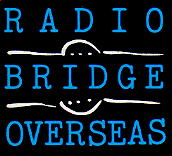
presents:
SIX STORIES FROM MOZAMBIQUE
© 1998 RADIO BRIDGE OVERSEAS TRUST

presents:
SIX STORIES FROM MOZAMBIQUE
© 1998 RADIO BRIDGE OVERSEAS TRUST
Cahora Bassa
One of the largest man-made lakes in Africa
CAHORA BASSA POWER TO FLOW AFTER 16 YEARS
The red area
outlining the lake is dense vegetation growing along the shore.
The west end of the lake is deeper and carries less sediment than
the eastern end, therefore the west end is darker blue.
Listen / STORY 5 - / 05'49"
"Once the Escudo rolls - The enclave of Cabora Bassa"
Songo was built to house the people who built Cahora Bassa dam and is now occupied by the staff needed to keep the generators well oiled. The small town is 5 km away from the lake and, although roads do lead down to the water, getting permission to camp or to launch a boat is likely to be a slow and laborious process. As the dam wall is regarded as a security risk (encircling mine fields are still there), prospective visitors are screened at a police checkpoint just before the town of Songo and are required to present written permission from one of the H.C.B. (Hydroeléctrica Cahora Bassa) offices.Songo and the whole Cahora Bassa enclave represents a little state within the state where the Portuguese still have the say; they own 82 % of the enterprise, only 18 % belongs to Mozambique.
![]()
MORE MOZAMBIQUE STORIES
THE RBO PRODUCTION
TEAM:
Research & Interviews in Mozambique:
Victor Desajado, Emmanuel
Camillo, Fortune Ncube, Klaus Juergen Schmidt
Scripts:
Victor Desajado,
Fortune Ncube, Klaus Juergen Schmidt
RBO-Interns attached
to research at Cahora Bassa:
Holger Bock, Olaf
Krems, Morris Nyakudya
Presenter:
Victor Desajado,
Fortune Ncube, Dadirayi Chigoya, Shorai Kariwa
Translation in
Mozambique:
Victor Desajado,
Emmanuel Camillo, Lucia Rodriguez, Christina Maria Patricio
Technical Supervision
at RBO studio:
Norbert Irmer &
Nenad Kuzmic
Administration &
Logistics:
Jennifer Chiriga
& Dadiray Chigoya
Managing Editor &
Director:
Klaus Juergen
Schmidt
![]()